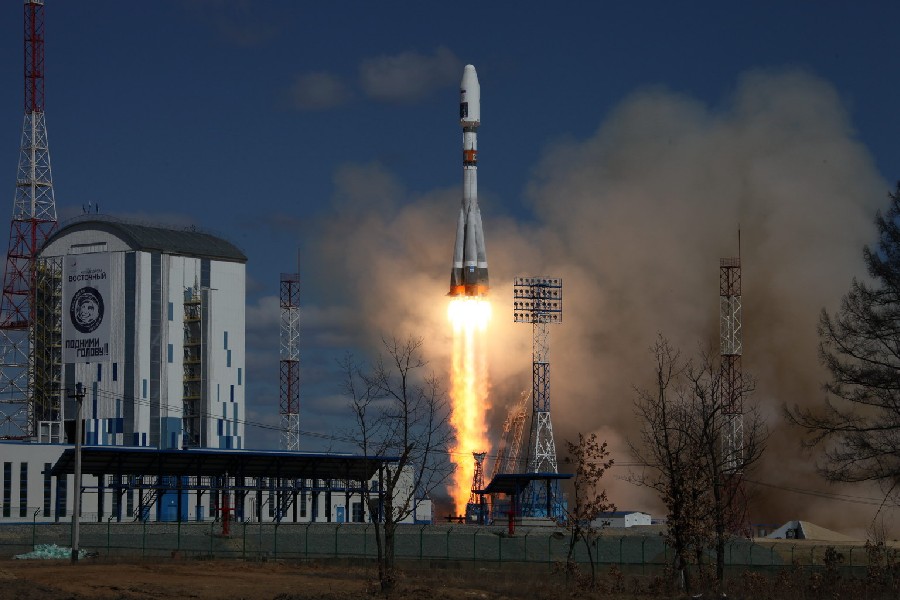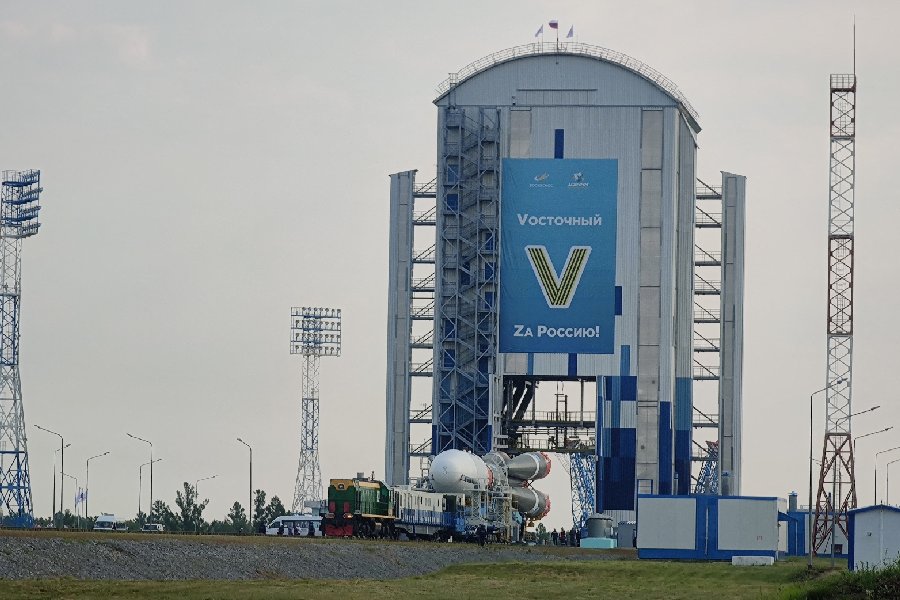With the fall of the Soviet Union, numerous space launch facilities now find themselves scattered across not only Russia but also newly independent republics like Kazakhstan and Ukraine. Yet Russia retains primary control and usage over most of these vital cosmic portals transporting humans and cargo into Earth orbit and beyond. But where exactly are Russian space launch sites located?
What exactly are the major Russian launch bases supporting crewed flights, robotic interplanetary probes, and maintaining orbital constellations today?
Read on to delve deeper into Russia’s primary spaceports and learn what fascinating past and future missions blastoff from across Eurasia’s lonely steppes.
As we survey the launch sites that drive Russia’s continued spacefaring heritage, we’ll uncover more about their incredible histories and the massive staging grounds that house rockets. These sites are so vast, they span across areas as large as small countries themselves.
We’ll also gain an insider perspective into these space complexes, located thousands of miles away from Moscow. These impressive sites are dedicated to launching rockets and escaping Earth’s gravitational pull.

Russian Space Launch Sites
So, where does Russia launch its space rockets? Russian space launch sites are crucial facilities where spacecraft and satellites are launched into space. These launch sites represent key hubs for Russia’s space exploration efforts, contributing to a legacy of achievements in space travel. Among the most prominent facilities are:
- Baikonur Cosmodrome – located in Kazakhstan; it has had numerous historic launches, including the first human in space, Yuri Gagarin
- Plesetsk Cosmodrome – situated in northern Russia, primarily used for military and polar orbit launches
- Vostochny Cosmodrome – inaugurated in 2016, is intended to reduce Russia’s dependency on Baikonur and serve as a modern space launch center
Baikonur Cosmodrome – Gateway to the stars
The famed Baikonur Cosmodrome stands as the beating heart of Russian spaceflight, serving as the launch site for monumental missions from Sputnik to Gagarin’s pioneering orbital flight to today’s Soyuz crew launches. Its storied legacy and continual use since 1957 makes Baikonur the world’s first and most enduring spaceport.
Historical developments
Constructed in absolute secrecy under Stalin in the 1950s, Baikonur was picked for its optimal location on the barren Kazakh Steppe.
Tests of early ICBMs quickly transitioned to space launch attempts until the facility indelibly imprinted itself into history with the launch of Sputnik 1. Soon Yuri Gagarin thunderously roared skyward from Baikonur’s pads to complete the first human orbital flight.
Location and accessibility
Baikonur lies in the remote desert steppes of south-central Kazakhstan from which Soyuz rockets today ferry crews to the International Space Station. Though no longer part of Russia, Kazakhstan continues leasing use of Baikonur for an annual payment.
While remote and restricted, occasional tour groups do travel to experience rocket launches from nearby viewing sites on the historic grounds that still supply the facility’s namesake small rail junction just over the horizon.
Plesetsk Cosmodrome – Military precision in space
Distinct from Baikonur’s fame supporting human spaceflight milestones, Russia’s primary military space center lies concealed within the country’s northern forests. Plesetsk Cosmodrome operates Russia’s defense and navigation satellites, conducting secretive military satellite deployments and missile defense technology tests.
History of Plesetsk Cosmodrome
Origins trace to 1957 ICBM facilities, with space operations added through dedicated launch pads and facilities for rocket assembly by the 1960s.
Plesetsk continues mainly launching military craft like communications, early warning, or reconnaissance satellites into specialized polar orbits alongside NASA and European partners on select science missions.
Location and accessibility
The heavily guarded Plesetsk Cosmodrome remains officially off limits to the public, lying 500 miles north of Moscow. Its high latitude allows direct polar orbit launches without rockets passing over populated Russian areas.
While excluded from entering, observers may potentially glimpse launch vehicles headed to pad or streaking aloft within the Arkhangelsk region if timing and fortune aligns.

Vostochny Cosmodrome – Shaping Russia’s space future
As Russia’s new flagship civil spaceport, the long-delayed yet now operational Vostochny Cosmodrome represents a modernized launch site planned to reinvigorate Russia’s space program onto its own soil.
With commercial satellite missions in progress, Vostochny may soon become the primary launch site for crewed flights, replacing the current practice of dispatching them from Baikonur, which is over 2000 miles away .
Historical background
After the fall of the Soviet Union, the main launch sites ended up outside of Russia. So, they started working on building a new spaceport within their own territory.
Vladimir Putin ceremoniously broke ground to commence Vostochny in Amur Oblast in 2010 with intentions for completion within five years. But technical delays, funding issues and contractor corruption stretched timelines over a decade to become operational.
Location and accessibility
Vostochny’s location in the Far East of Russia allows for direct access to various orbit inclinations without rocket passing over populated areas. Its northern site is used for missions to higher orbits, like GLONASS navigation satellites, while southern pads are more suited for commercial telecom satellites with less strict trajectories.
Although Vostochny is remote and under military control like other spaceports, there may be occasional civilian tours allowed by the government once human spaceflight operations expand.
Kapustin Yar rocket range – Shrouded in secrecy
Mysterious beginnings
While less frequently discussed compared to Russia’s three main spaceports, no overview of Soviet and Russian launch activities is complete without reference to the peculiar Kapustin Yar.
This large complex, which includes test stands and small pads, is located closer to the Caspian Sea compared to other usual northern cosmodromes. Historically, it served Soviet development of large rocket engines and exotic propellants too unstable for inclusion nearer major populated centers.
Role in space access
Kapustin Yar functioned briefly as an early ballistic missile test center adapted later for vertical launches not requiring extensive infrastructure. Cargo suborbital launches occurred in the 1960s and 1970s alongside orbital satellite missions.
Today it primarily hosts Russian Aerospace Defense Force destructive anti-missile experiments rather than space access, though a few military satellite launches do still occur using new technologies.
Continued secrecy
Kapustin Yar is quite interesting because it keeps a lot of secrets about its past and ongoing rocket engine tests. Sometimes, you can even see glowing lights that hint at liquid fuel experiments that may be used for future launches from the cosmodrome.
While no tourists walk the remote site, Kapustin Yar’s past clandestine efforts and raging rocket engine experiments continue. However, it’s important to note that Kapustin Yar isn’t as prominent on the global stage as Russia’s main spaceports.

Launch Vehicles – The Rockets Behind the Rise
Reliable Soyuz workhorse
The medium Soyuz rocket remains unique in its continual reliability and evolutionary enhancement across sixties successful years dispatching over 1900 missions. Its versatility established a seasoned reputation now boosting Russian modules to the ISS along with international partner craft too.
Proton – The heavy lifter
The heavy Proton built on early ICBM efforts to emerge as a dependable unmanned workhorse lofting space station components, planetary probes, military satellites, and commercial comsats for decades. Its capacity continues supplementing Russia’s space infrastructure between Earth and the edge of cis-lunar space.
Energia – Peak super heavy lift
The super heavy Energia, most powerful rocket ever constructed, flew just twice in the late 1980s while achieving stunning feats like lofting Buran space shuttle and Polyus weapons platform payloads over 100 tons apiece.
The legacy of these vehicles towers over present ambitions while the next generation prepares to uplift Russia’s launch capabilities further in the 21st century’s second space age soon unfolding.
Conclusion
Russian space launch sites serve as the critical spaceports enabling access to orbit and propelling interplanetary probes across the solar system.
From the storied stepping stone of Baikonur Cosmodrome to present-day aspirations centered around Vostochny, these launch complexes provide indispensable gateways for Russian rockets to escape Earth’s gravity.
We hope reviewing the capabilities and activities across these cosmodromes has illuminated their foundational role in spaceflight achievements spanning decades.
While much remains undisclosed, gaining perspective on Russian space launch sites helps to understand and appreciate the extensive space sector that supports Russia’s ambitious space missions. This sector has been instrumental in their journey from launching their first satellites and sending space travelers to paving the way for future advancements in space exploration.
